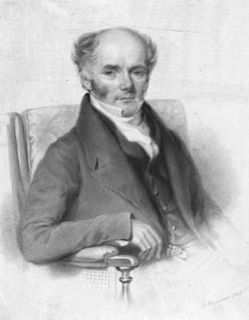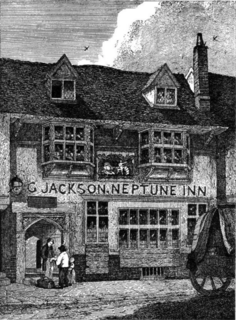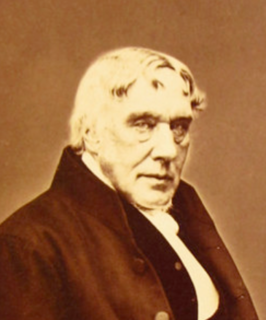
Jean Ingelow was an English poet and novelist,who gained sudden fame in 1863. She also wrote several stories for children.

The Ipswich Racecourse is an area of Ipswich in Suffolk,England,that was formerly a racecourse from 1710 to 1911.

Wortham is a village and parish in Suffolk,England,close to the border with Norfolk. Its church,St Mary the Virgin,lies about a mile north of the present-day village. It is one of 38 existing round-tower churches in Suffolk and the one with the greatest diameter in England.
Sir John Cordy Burrows (1813–1876) was a British surgeon and local politician.

Martin &Newby was the oldest shop in Ipswich,Suffolk until it closed down in June 2004. The business was established in Fore Street in 1873 and was based around 5 departments:Ironmongery,Electrical,Domestic,Gardening and Tools. The shop gave a very traditional personal service,it was reported by local press that the shop closed down because they could not compete with DIY Superstores such as B&Q and the increasing range of products offered by supermarkets.

John Bishop Estlin was an English ophthalmic surgeon.
William Dalrymple was an English surgeon. He learned his trade in London and practised in Norwich,initially from his father's house and later in the Norfolk and Norwich Hospital. He received attention for successfully performing of the then rare operation of tying the carotid artery.

The Ipswich Docks,Ipswich wet dock and the wet dock,) are a series docks in Port of Ipswich located at a bend of the River Orwell which has been used for trade since at least the 8th Century. A wet dock was constructed in 1842 which was 'the biggest enclosed dock in the United Kingdom' at the time. A major regeneration of the area has taken place since 1999.
James Sampson was an Irish-born physician,educator and politician in Canada. He served as mayor of Kingston from 1839 to 1840 and in 1844.

Neptune Inn is an historic public house located in Fore Street,Ipswich,Suffolk,England. The building was originally built around 1490 and is grade II* listed.

Richard Dykes Alexander was a businessman based in Ipswich,Suffolk.

John Dupuis Cobbold was a member of the Ipswich based Cobbold family.
Charles Foote Gower was an English soap manufacturer based in Ipswich. He was a significant businessman in that town.
Samuel Garratt was an English clergyman active in the Evangelical Party of the Church of England.

John Speed's Ipswich is a graphic account of the town of Ipswich,Suffolk created by John Speed in conjunction with the dutch engraver,Jodocus Hondius,in 1610. It was featured as an inset for his map of the county of Suffolk,published in Theatre of The Empire of Great Britaine. It is the earliest extant map of Ipswich and features many buildings of the late medieval period,whilst at the same time showing streets laid out in a grid pattern which has largely been retained into the twenty first century.

St George's Chapel,was a religious building located in Ipswich,Suffolk. The spot where it was located is now occupied by St George's Terrace,in St Georges Street. This lies just to the north of the historic town centre of Ipswich. It was from this chapel that Thomas Bilney was taken in 1527 and accused of heresy. No trace of the building remains.
Christ's Hospital,Ipswich was established in Tudor Ipswich,Suffolk. The original benefactors were Robert Felaw,William Smarte and Henry Tooley.
Henry Tooley was a Suffolk,England merchant. Alive during the Tudor period,by the time of his death he was one of the richest businessmen in the town of Ipswich. He was closely associated with the fellow merchant and Member of Parliament for Ipswich,Robert Daundy. His trade network extended Biscayan ports,the Netherlands and Iceland as well as including much of East Anglia east of line drawn between Chelmsford and Thetford –and the highly populated and industry towns of south Suffolk in particular. He left two testaments to his lucrative career as a merchant" the Tooley Almshouses and the account books preserved in the Suffolk Record Office.
Frederick Brett Russell was an English architect and artist based in Ipswich,Suffolk.











